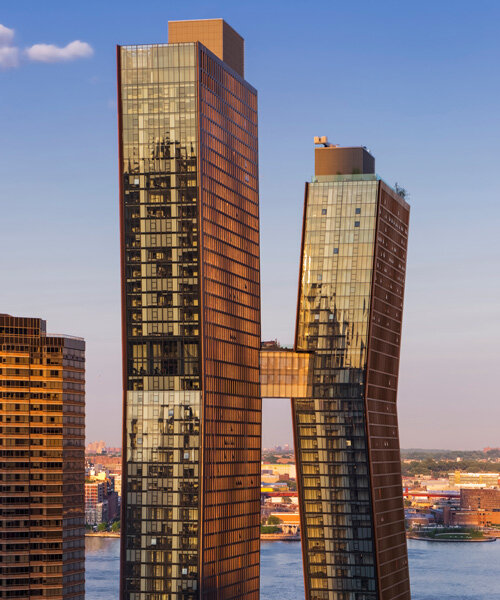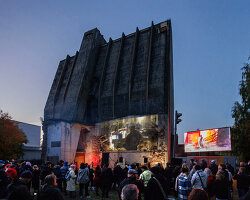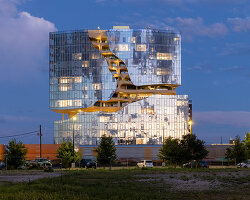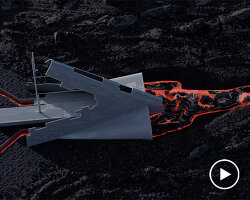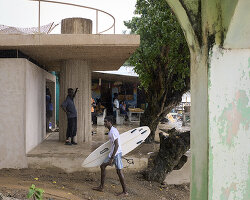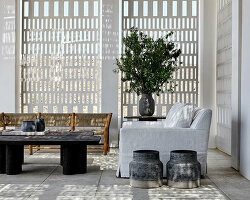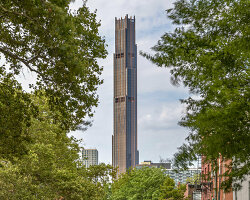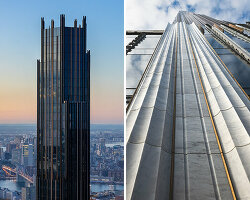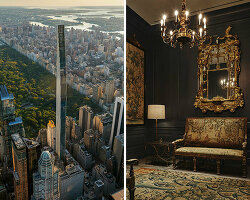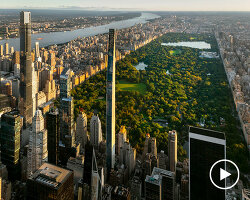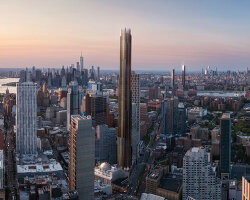‘the work of SHoP is always evolving because it was never intended to be a static pursuit,’ christopher sharples, founding principal of SHoP architects, tells designboom. ‘we founded our practice with a commitment to continually pushing the boundaries of what’s been accepted as the traditional role of the architect.’ although the projects have gotten bigger, and taller, over the last 25 years, the firm’s approach has remained the same. ‘we ask a lot of questions, immerse ourselves in research, and we never assume that we are specialists in anything to the degree that there’s not lots to gain from another perspective,’ adds principal angelica trevino baccon. ‘we are always curious.’
with projects ongoing around the world, from sydney to botswana, designboom spoke with all seven of SHoP’s principals. read the thoughts of christopher sharples, angelica trevino baccon, gregg pasquarelli, dana getman, john cerone, coren sharples, and william sharples below.
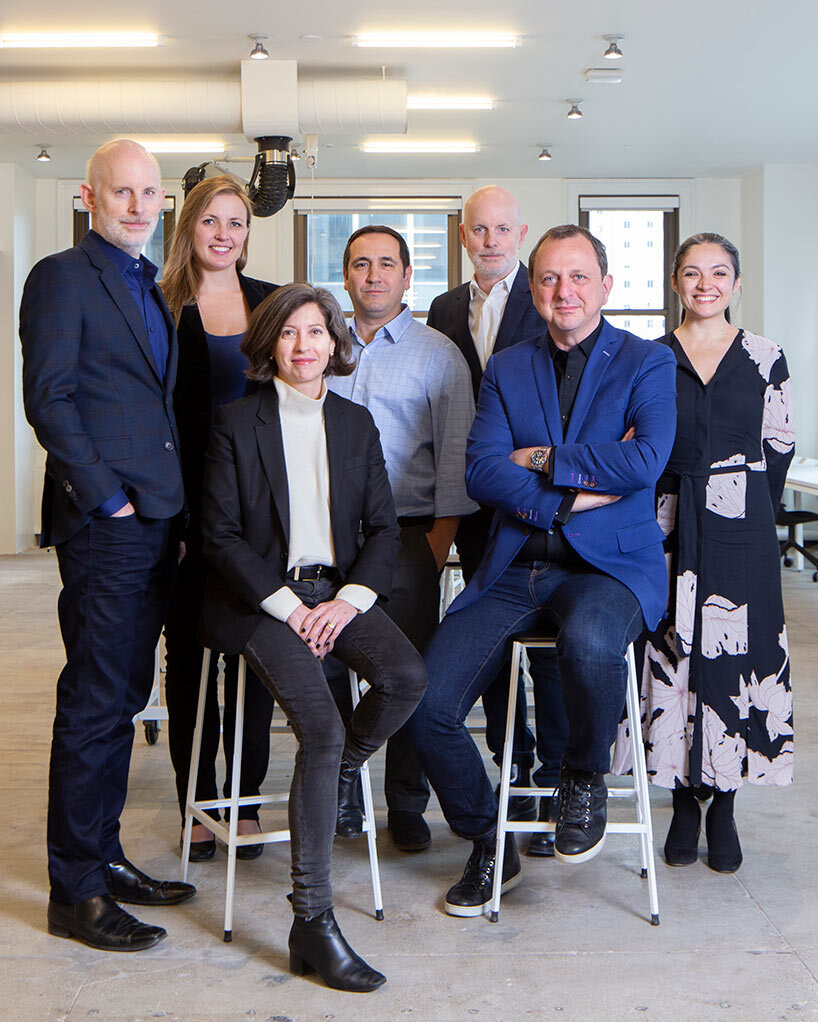
SHoP’s seven principles | image © SHoP architects
designboom (DB): SHoP was founded in 1996. can you describe the evolution of the firm’s work since then?
christopher sharples, founding principal: the work of SHoP is always evolving because it was never intended to be a static pursuit. we founded our practice with a commitment to continually pushing the boundaries of what’s been accepted as the traditional role of the architect. from our first projects, our work is a constant and adaptive response to everything from research and data cues to a willingness to explore new materialities and means of manufacture, to understanding the needs of our clients and our cities — and never in a fixed style.
even as the scale of our projects has gotten dramatically bigger, our office global, and we’re working every day in typologies and technologies that didn’t exist then, we always go back to our core principals. that is to always be curious and always design for people first. to look at the full complexity and context and community of an architectural project and never reduce it to style or image. and to be good citizens, to consider public space in a way that advances joy and health and equity, to create workplaces and a culture that supports greater wellness and collaboration, all toward establishing a more joyful, humane and resilient environment.
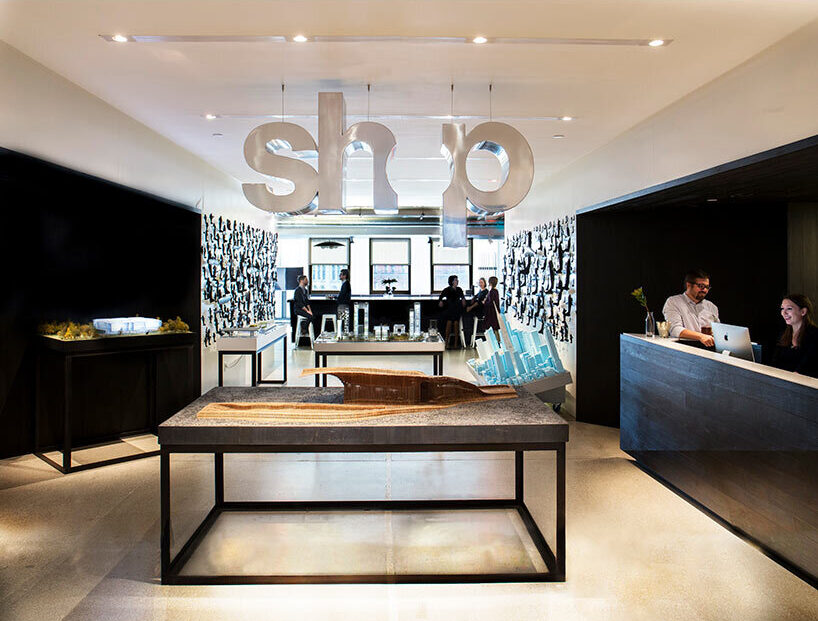
SHoP’s new york office | image © SHoP architects
DB: can you talk us through SHoP’s design process? is there a strong emphasis on collaboration among the team?
angelica trevino baccon, principal: to us, the design process is collaboration. there is no architecture without collaboration. it’s finding greater collaboration through a shared visual language, process — and participation — we’re always after and that we believe is the groundwork for innovation. we started experimenting in partnership with some of our west coast tech clients in 3D model collaboration and it’s thrilling what becomes possible when you can all be in there together, and this includes the client, building trust and advancing the process in real-time.
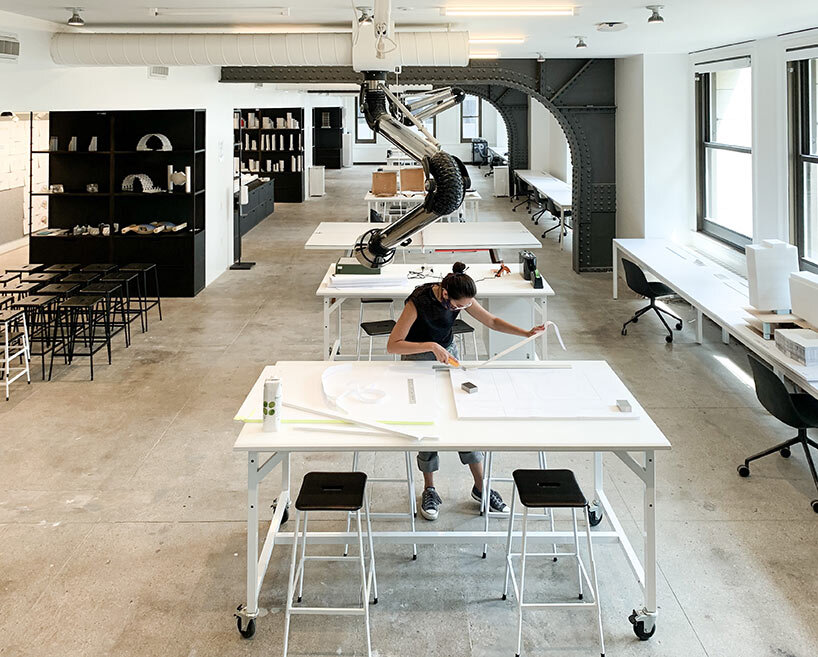
SHoP’s new york office | image © SHoP architects
angelica trevino baccon (continued): we consider our clients to be our partners, and we work together to design the right process. it’s a space that’s vital to the success of the space we will ultimately design for them. more often than not we find ourselves building our own tools in order to help us be more efficient, more communicative, more supported in proposing the big ideas. these tools let us save time on the repetitive in order for us to dedicate time to the intangible.
we ask a lot of questions, immerse ourselves in research, and we never assume that we are specialists in anything to the degree that there’s not lots to gain from another perspective. we are always curious. there is always room to learn. nothing is too precious to be modified, improved upon, fine-tuned. we love to stand back and watch the city absorb what we created. we collect more data, keep listening and learning, hopeful for the chance to do it all over again, ever more informed from the benefit of more human interaction, input — collaboration — for next time.
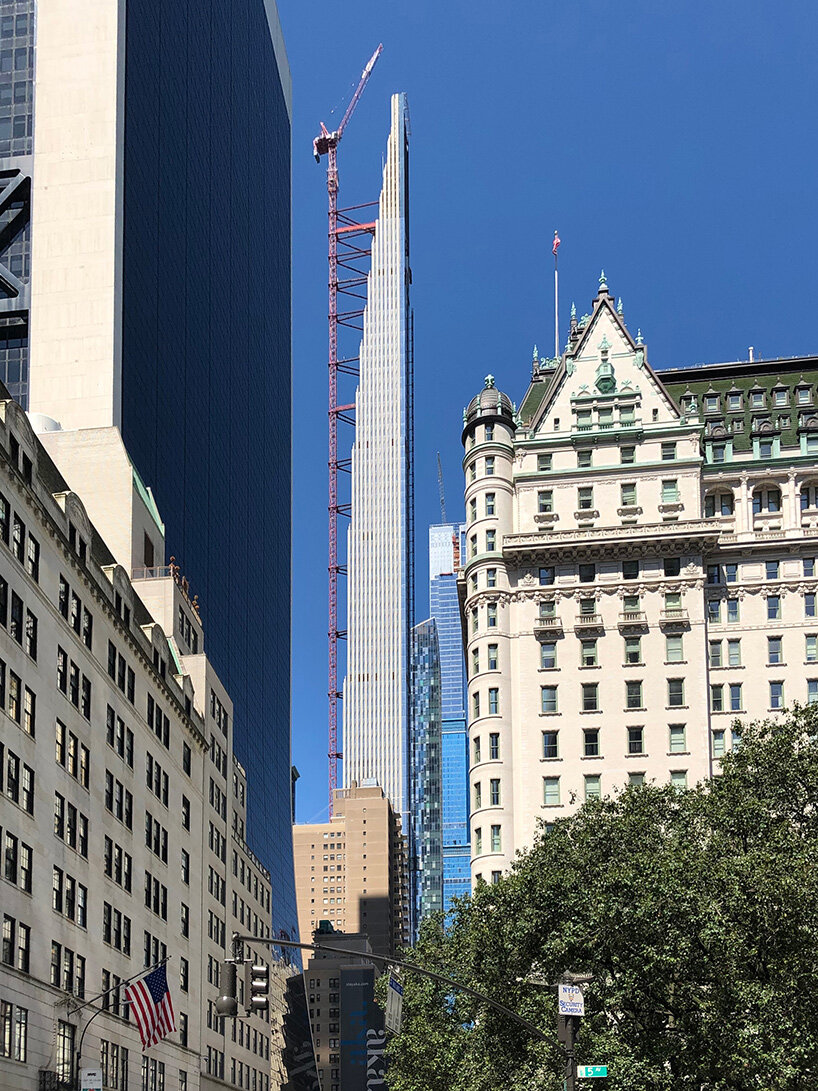
111 west 57th street | image © michael young | read more about the project on designboom here
DB: in what ways did SHoP reference manhattan’s classic skyscrapers for 111 west 57th street? and how challenging was it to design such a slender skyscraper?
gregg pasquarelli, founding principal: the idea behind 111 was to take this completely modern engineering marvel — the most slender supertall building in the world — and splice it with the DNA of the classic manhattan skyscrapers we all love, to create a new kind of ‘both/and’ typology. it’s the opposite of all those slick, blue glass skyscrapers that you see in hudson yards — a building that can only exist in manhattan and couldn’t be plucked off the skyline of dubai, london or shanghai.
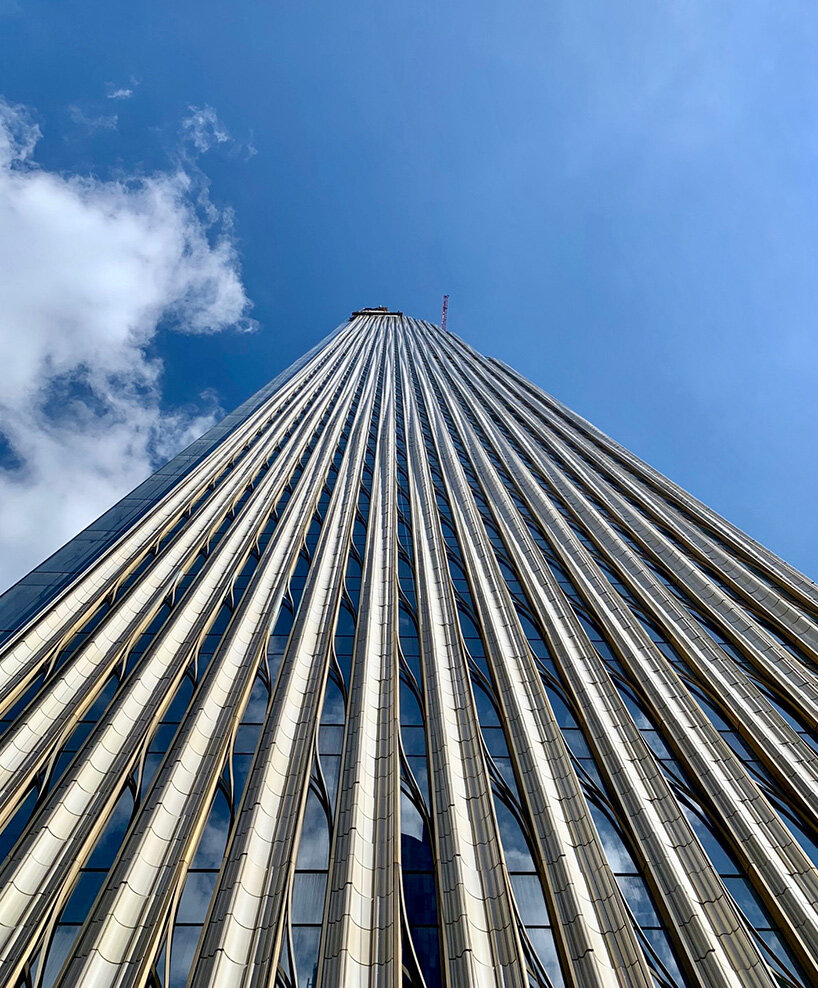
111 west 57th street | image © SHoP architects
gregg pasquarelli (continued): we got there by carefully shaping the tower’s profile to be at once familiar as a new york icon and completely, unexpectedly new. the terra-cotta was a key part of that. in its traditional uses, it’s a material that has really come to epitomize a certain era of manhattan elegance and mystique. we took it and updated it for the present: modeling the façade as a bold moiré pattern that changes dramatically throughout the day as the sun and shadows sweep across it.
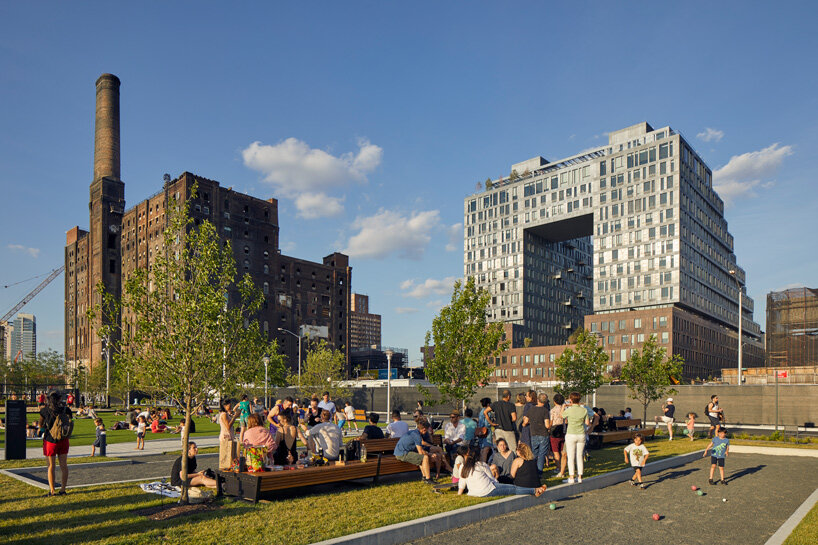
325 kent | image © ty cole | read more about the project on designboom here
DB: the completed 325 kent and the american copper buildings both bring a new sense of dynamism to the city. how important is it to design buildings that capture the public’s imagination?
dana getman, principal: we want every building we create to inspire us, delight us, and bring us joy. dynamism is a great word to describe that feeling, because it captures the liveliness those two buildings specifically embody. but with that said, dynamism can take many forms, depending on the context in which we are building. 325 kent and american copper both have a larger scale of exuberance in their forms — they are both waterfront properties that embody the joy of being poised on the edge of the city, the movement of the water, and the open, expansive views.
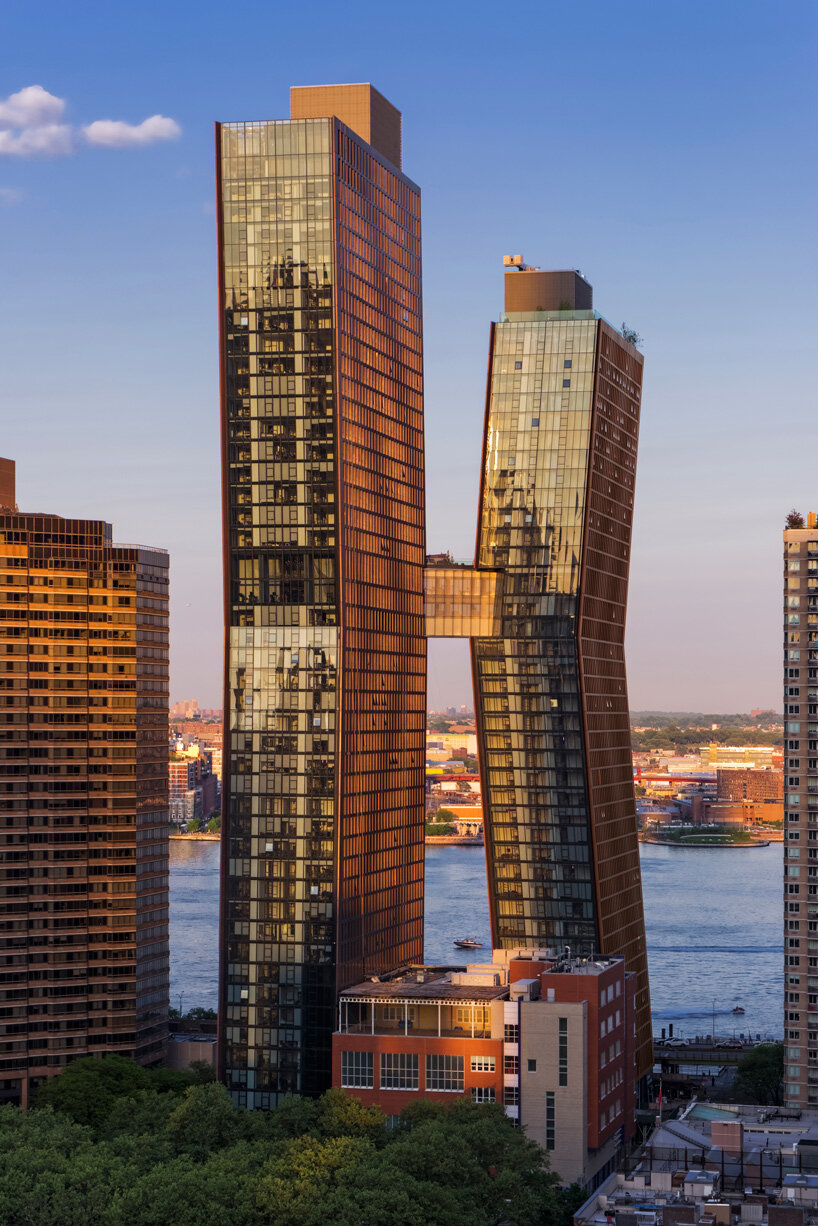
american copper buildings | image © jeff goldberg / esto | read more about the project on designboom here
dana getman (continued): meanwhile, some of our work takes on a more subtle form of dynamism — such as 242 broome, whose form is sculpted more as a reaction to the intimacy of the street, as it twists around the corner to bring relief from the bustling neighborhood sidewalks. we believe that buildings should reflect the lively, vibrant communities around them, and therefore each building we design is uniquely grounded in a sense of place. we always react to the community, history, and physicality of a location as we design.
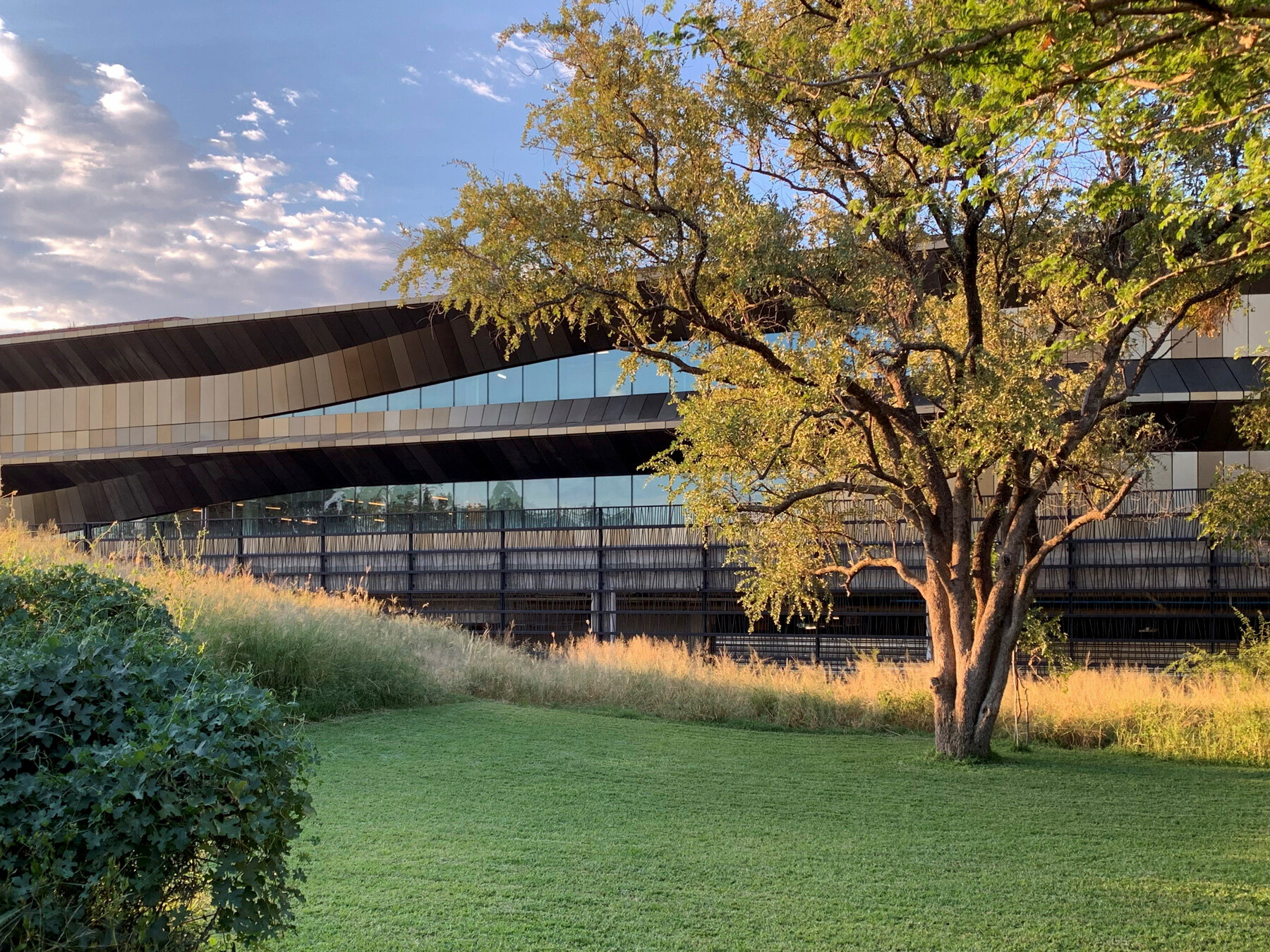
the botswana innovation hub | image © mark sampson
DB: can you tell us about the botswana innovation hub? what digital modeling and visualization technologies did you use to develop the project’s design?
john cerone, principal: the digital process used to design, coordinate, and deliver the project’s façade relied on a state-of-the-art 3D modeling platform — this is technology that’s more typically used in the aerospace, automotive, and marine industries. lightweight ‘wireframe’ models were used to define the overall composition of the form, on which detailed systems models were ‘hosted’ as informational input was received from the engineering, manufacturing, and install teams.
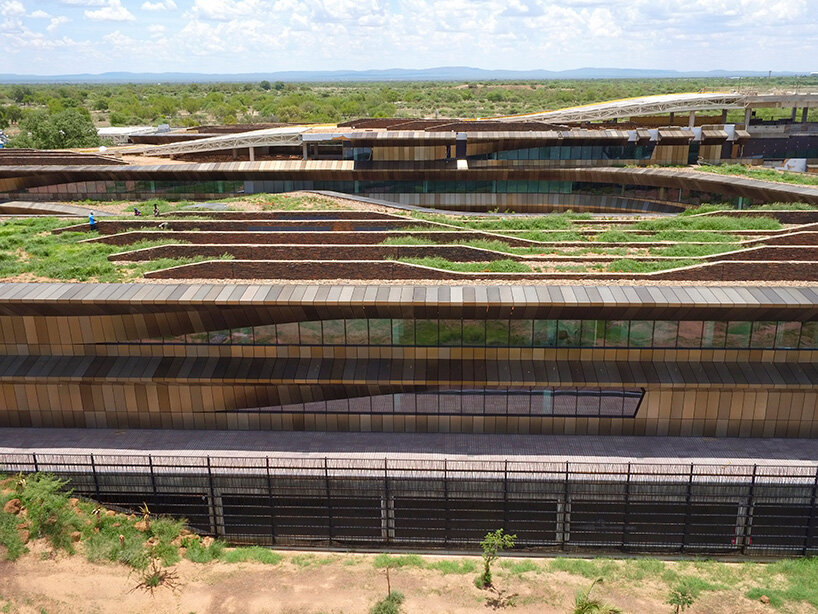
the botswana innovation hub | image © SHoP architects | read more about the project on designboom here
john cerone (continued): the façade system consists of 3,000 unitized panels, and the sinuous nature of the integrated sun shading elements meant a majority of those panels and all of the internal parts are bespoke. the mass-customization, design for manufacturing, and assembly approach was managed through groups of parametric templates that could accommodate the variation and automate the production instructions, for over 1 million parts, directly to the fabrication equipment.
as the design components evolved from concept to their final, fabricated state, the entire process took place in a cloud-based platform which allowed all stakeholders — from NYC, to cape town, to botswana — to see the progress of every item in real-time.
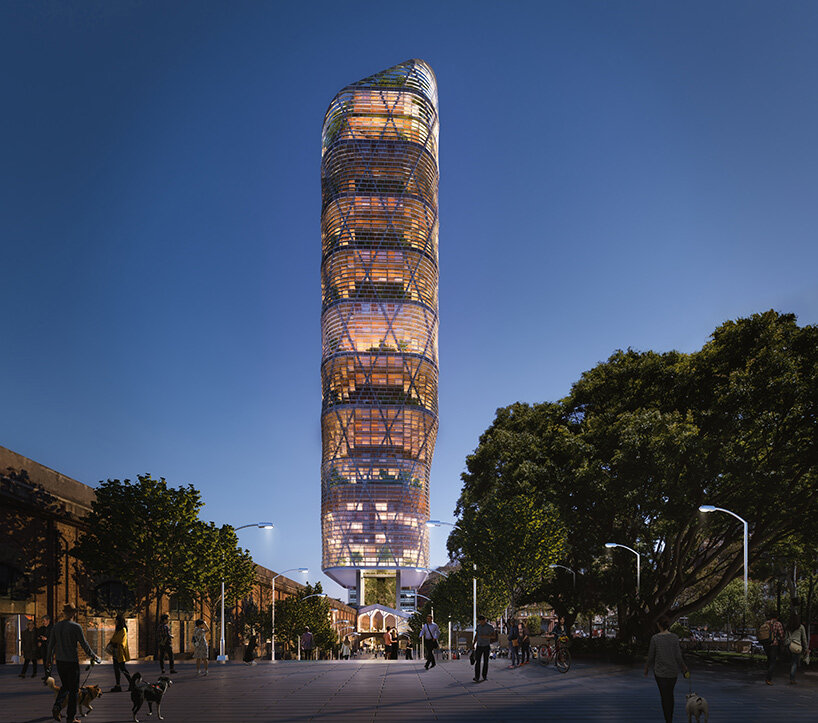
atlassian HQ | image © SHoP architects + BVN | read more about the project on designboom here
DB: for the atlassian HQ in sydney, designed in collaboration with BVN and eckersley o’callaghan, how will mass-timber be used to ensure the project’s sustainability?
coren sharples, founding principal: we designed the new atlassian HQ in sydney to support and reflect the company’s core values. among these are an intense focus on workplace wellness and sustainability. the tower is broadly organized into half a dozen components we call ‘habitats’. each one is a four-level mass timber construction that is freestanding within the steel and glass exoskeleton of the tower itself. the spaces in between these two structural systems are then available to perform as a new kind of space: an energy efficient, naturally ventilated zone, not indoors but also not quite outdoors, akin to a garden but closely integrated into the cultural flow of the workplace at large.
the tower uses mass timber in a hybrid structure that allows us to greatly reduce the amount of steel and concrete used in construction, thereby reducing the building’s overall carbon footprint. because the timber is exposed throughout most of the interior, we are also largely eliminating the use of wallboard and other cladding materials. while this has significant sustainability benefits, it also lends a welcoming aesthetic to have the natural warm wood used as the interior finish.
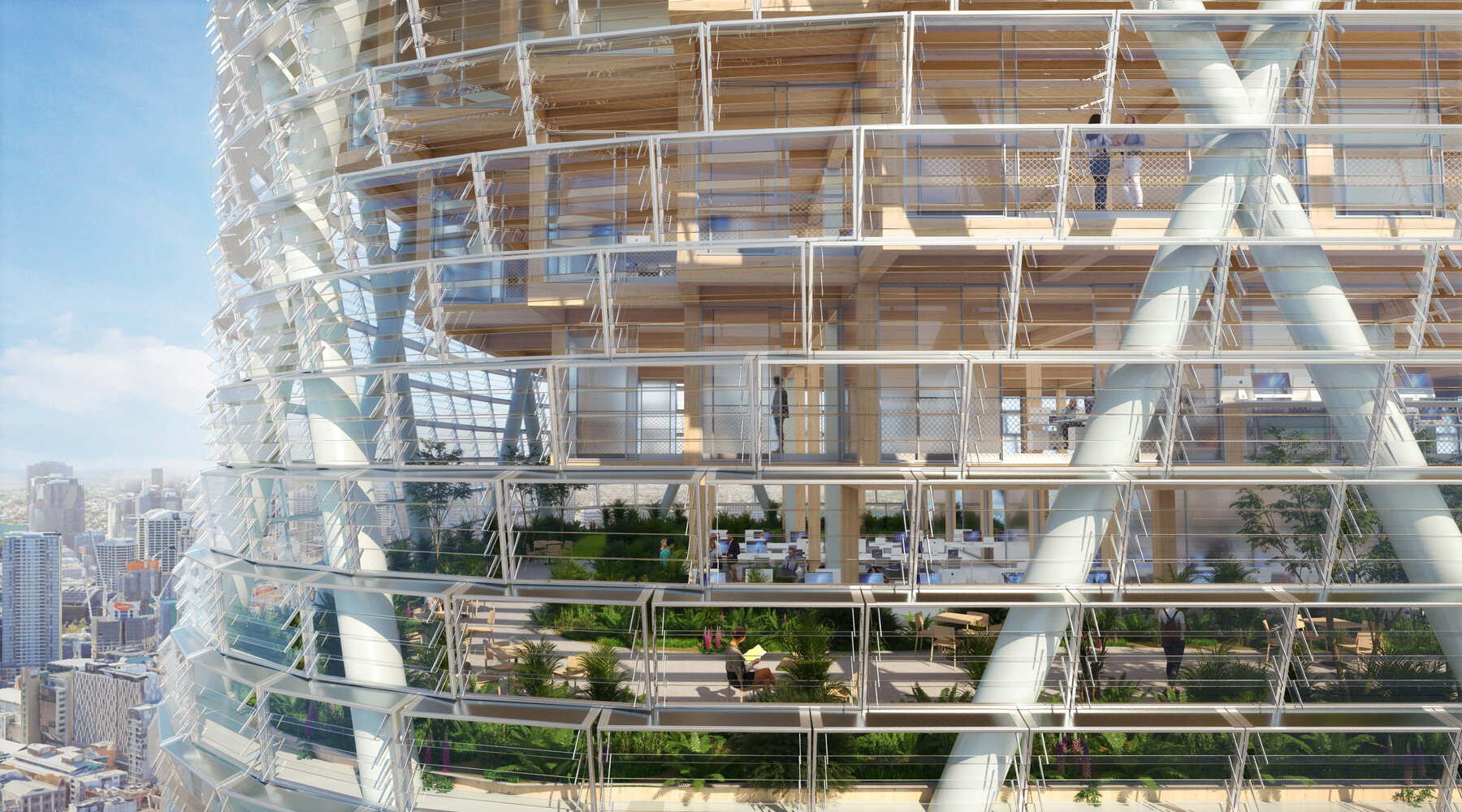
atlassian HQ | image © SHoP architects + BVN
DB: SHoP has always been at the forefront of new construction methods. what major shifts in construction do you envision for the next decade?
william sharples, founding principal: the way buildings are built hasn’t changed significantly in 50 years. construction, unlike most any other industry that touches our lives, has been uniquely resistant to disruption. what’s exciting now is that over the last 10 years or so the path forward for the next 50 has come into very clear focus. there have been monumental breakthroughs in material science, like the 3D print revolution, and incredible steps forward with architectural visualization and new AR/VR capabilities coming online.
but these are all sort of pointing the way to the greater revolution taking place around 3D modeling and the practice of designing buildings as a digital twin. working with — within — the model empowers every sector involved in the process with a single and central source of product data, which includes every possible component needed for manufacture and assembly. the process becomes a means to drive communication and collaboration, opening up new opportunities, efficiencies, transparencies, and ultimately innovations radical enough to overturn legacy practices and redirect the course of construction for the next century.
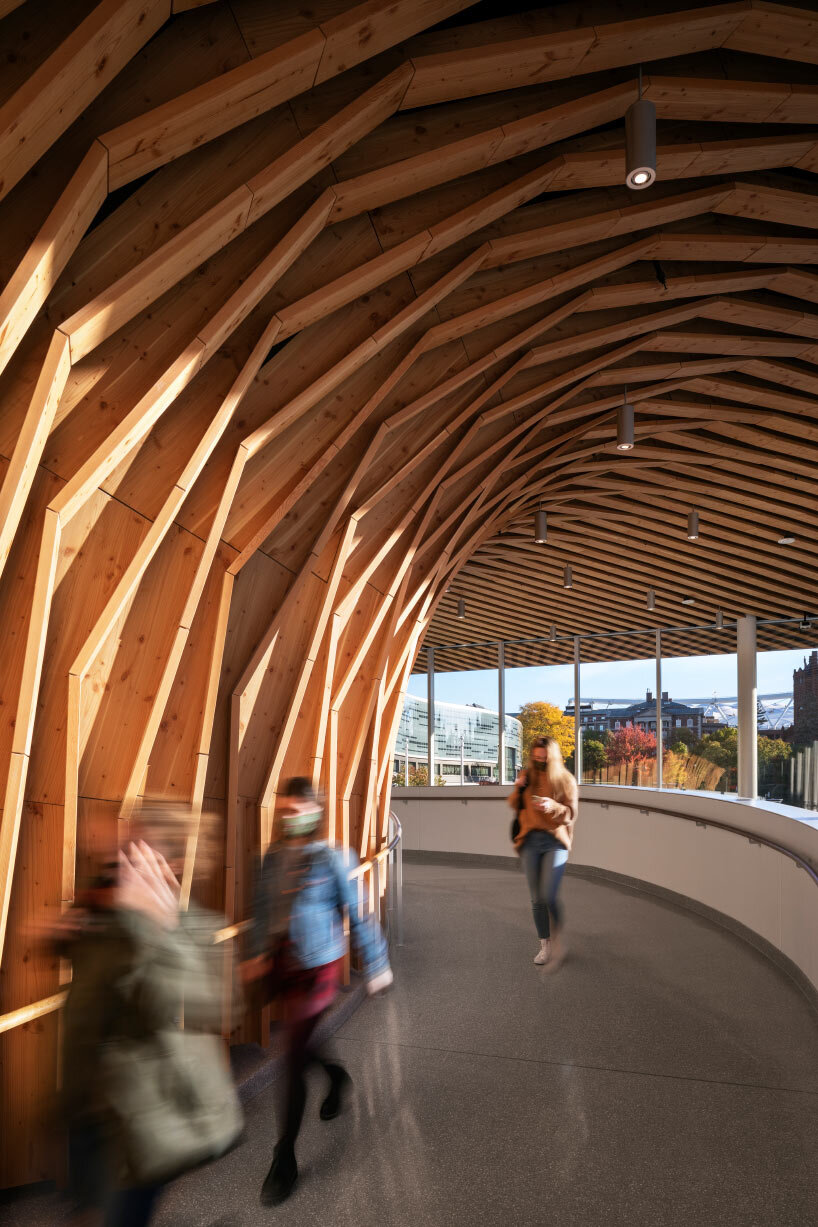
the national veterans resource center at syracuse university | image © james ewing
DB: what role do you see architects playing in the development of our cities post-pandemic? are you optimistic about the future of our cities?
christopher sharples, founding principal: the pandemic was of course an unforeseen crisis. it came suddenly and challenged our notions of how we live and work and connect with nature and each other and what makes us feel safe in our urban places. there’s a new imperative — and optimism — in the actions we can take to address the challenges of our cities.
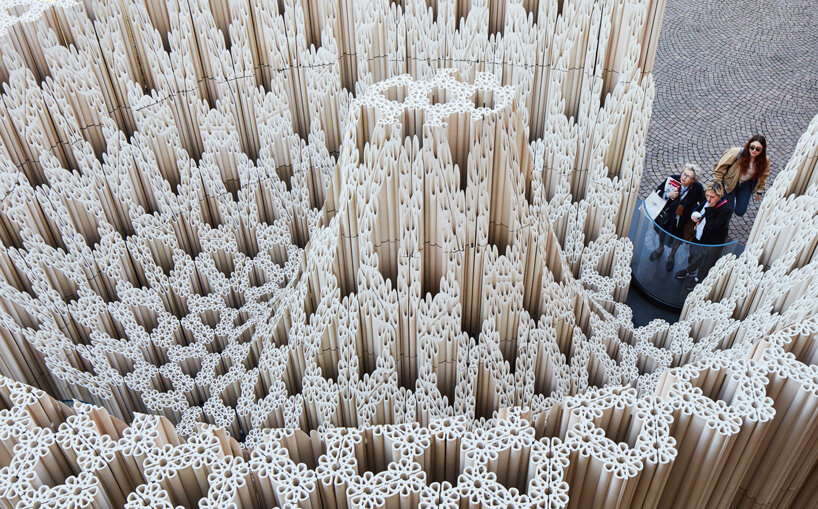
wave/cave | image © tom harris | read more about the project on designboom here
christopher sharples (continued): post-pandemic, architecture has to concentrate efforts and what we’ve learned to turn back to the enormous problems it was beginning to grapple with before on a global scale: to recognize that we can and should be central players in meaningful climate response, to meet the housing crisis with creative solutions, and to partner in eradicating abuses in labor practices and the global supply chain. these are all issues that architecture has a specific role and responsibility to fix. the first thing we can do is to help make visible the things that we can’t currently see. we can start to interrogate accepted models and improve the overall quality of our built environment, the wellness of our cities and our society.
architecture interviews (272)
SHoP architects (38)
PRODUCT LIBRARY
a diverse digital database that acts as a valuable guide in gaining insight and information about a product directly from the manufacturer, and serves as a rich reference point in developing a project or scheme.
